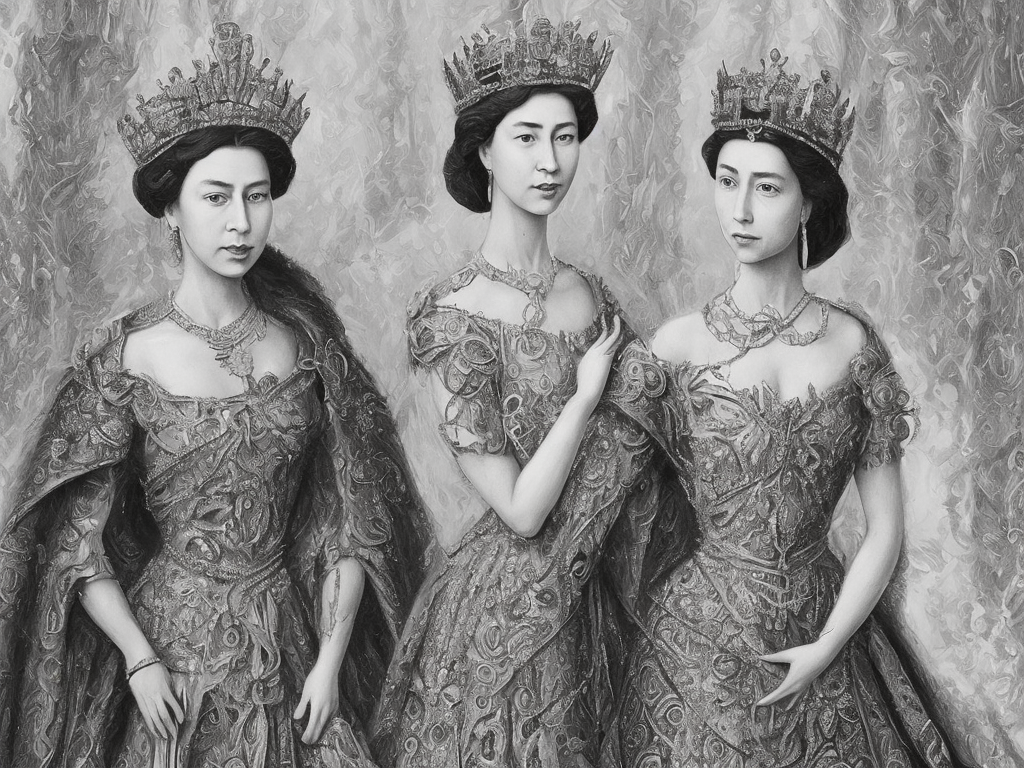
When it comes to monarchy and royal families, there are often confusing terms and titles thrown around, and it can be difficult to understand the differences between them. One of the most common areas of confusion is the difference between a queen and a queen consort. Both titles sound similar, but they are actually very different positions within a monarchy.
A queen is the female monarch who rules a country. She is the head of state and has the ultimate power in the country's government. A queen is usually born into a royal family and is the direct heir to the throne. However, in some cases, a queen can also be the wife or widow of a king.
On the other hand, a queen consort is the wife of a king who is not herself the monarch. She has no power or authority, but she is considered a member of the royal family and will usually play a role in royal events and ceremonies. A queen consort does not inherit the throne and has no formal role in the government.
The difference between a queen and a queen consort can be illustrated through the examples of Queen Elizabeth II and Queen Elizabeth, the Queen Mother. Queen Elizabeth II is the current queen of the United Kingdom and has been on the throne since 1952. She inherited the title from her father, King George VI, and has ruled for over 68 years.
The Queen Mother, on the other hand, was the wife of King George VI and the mother of Queen Elizabeth II. She was known as Queen Elizabeth, but she was not the monarch. She played a ceremonial role in the royal family and was much loved by the public for her warmth and kindness.
So, what are the differences between a queen and a queen consort?
Power and Authority
As mentioned, a queen is the female monarch who rules a country. She has the ultimate power in the government and is responsible for making important decisions, such as signing bills into law and representing the country on the international stage. A queen is also the head of the armed forces and makes decisions about national security.
In contrast, a queen consort has no power or authority. She is the wife of the king and plays a ceremonial role in the royal family. She does not make decisions about the country's government or have any political influence.
Inheritance
In most monarchies, the position of monarch is inherited through the family line. This means that a queen is usually born into a royal family and is the direct heir to the throne. When her predecessor (usually a king) dies or abdicates, she becomes the monarch.
A queen consort, on the other hand, does not inherit the throne. She is the wife of the king and does not have any claim to the crown. If her husband dies or abdicates, the next in line for the throne (usually their eldest son) will become the monarch. The queen consort will then become a dowager queen, which means she will continue to hold the title of queen but will no longer have any active role in the government or the royal family.
Role in the Government
As the monarch, a queen has an active role in the government. She is consulted on important decisions and has the power to veto legislation. However, in modern times, the monarch's role in the government is largely ceremonial. In constitutional monarchies (such as the UK), the monarch acts as a figurehead and symbol of the country, but the government is run by elected officials.
A queen consort, on the other hand, has no role in the government. She is a member of the royal family and will attend important events and ceremonies, but she has no say in how the country is run.
Title and Style
A queen is addressed as "Your Majesty" or "Queen" and is referred to as "Her Majesty" or "The Queen" in formal situations. She has a specific style, such as Queen Elizabeth II, Queen Victoria, or Queen Elizabeth I.
A queen consort is addressed as "Your Majesty" or "Queen" but is referred to as "Her Majesty Queen [Name of King]" or "The Queen Consort" in formal situations. She has a specific style, such as Queen Elizabeth, the Queen Mother, or Queen Catherine, wife of King Henry VIII.
In conclusion, the difference between a queen and a queen consort comes down to power and authority, inheritance, role in the government, and title and style. A queen is the female monarch who rules a country and has the ultimate power in the government, whereas a queen consort is the wife of a king who has no power or authority and plays a ceremonial role in the royal family. Both titles are important within a monarchy and have their own unique history and traditions.
 Self-Instruct
Self-Instruct